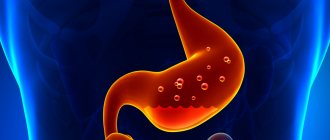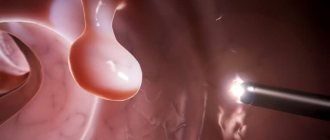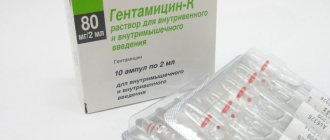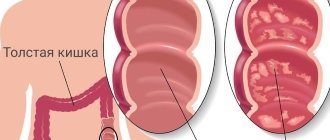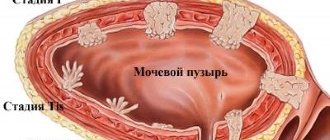Any branch of healthcare has its own statistical and methodological standards, as well as a system according to which gradation is carried out. In the section that combines the diseases described to date, this is the International Classification of Diseases, 10th revision. In daily clinical practice, for convenience, this classification is usually called ICD-10. It is international in nature and designed to provide common starting points for diagnostic criteria for known diseases.
The system is adopted for the work of practicing specialists in the field of medicine. This regulatory document is reassessed every 10 years. The complete edition of the classification consists of three volumes. This includes instructions for use, the classification itself and a short alphabetical index.
In the classification, the names of the disease are encrypted with a special code consisting of Latin letters and Arabic numbers. Acute or chronic gastritis according to ICD-10 reveals a number of varieties in morphology and severity of clinical manifestations. Acute gastritis according to ICD-10 is assigned code K 29.1
What it is?
Superficial gastritis is a disease of the digestive tract, during the development of which the secretory function of the stomach is disrupted. The pathological process provokes inflammation of the mucous membranes of the organ.
The disease is characterized by an increase in the production of gastric juice. A distinctive feature of the disease is the likelihood of rapid progression and relief of existing symptoms. In the absence of treatment, gastritis rapidly degenerates into other forms. If diagnosis and treatment are carried out in a timely manner, then you can get rid of the disease within a short period of time.
Damage to the mucous membrane.
Features of the disease:
- the inflammatory process develops only in the superficial layers of the mucous membranes;
- superficial gastritis is considered the initial stage of damage to the stomach (other forms of gastritis are complications);
- in the absence of complications, tissue restoration can occur within several days (especially in young patients).
Causes of the disease
The most common cause of the development of superficial gastritis is considered to be damage to the digestive system by the pathogenic bacterium Helicobacter pylori. These microorganisms have an irritating effect on the mucous membranes of the gastrointestinal tract. Gastritis cannot be a primary disease. For its development, concomitant deviations in the digestive system are necessary.
The progression of the inflammatory process occurs under the influence of negative external or internal factors.
Other causes and provoking factors:
- the presence in the diet of a large amount of hot seasonings, spices, salt;
- violation of diet (dry snacks, consumption of harmful foods);
- abuse of bad habits (drinking alcohol, smoking);
- exposure to adverse external conditions (dust, air pollution, etc.);
- consequences of regular stressful situations;
- uncontrolled use of medications;
- pathologies of the endocrine system in combination with impaired immunity;
- complications of intestinal infections or infection of the body with parasites;
- consequences of metabolic disorders in the body;
- impact of autoimmune disorders;
- pathological processes in the kidneys or liver;
- food allergies or food poisoning.
Types of superficial gastritis according to ICD-10
According to ICD-10, superficial gastritis is assigned code K29.3. The disease refers to chronic pathologies of the digestive tract. If it is not possible to diagnose the cause of the inflammatory process, superficial gastritis can be assigned to code K29.6 (other gastritis). Depending on the location and degree of damage to the mucous membranes of the stomach, the disease can have a focal and diffuse form.
Focal superficial gastritis
In the focal form of superficial gastritis, the inflammatory process affects individual areas of the mucous membranes of the stomach. First of all, the disease begins to develop at the point where the organ passes into the duodenum. The disease can be provoked by intestinal infections, endocrine and autoimmune abnormalities, chemical or mechanical irritation of the tissues of the digestive tract. A distinctive feature of the disease is the localization and cause of the pain syndrome (pain occurs in the stomach area after eating certain foods).
The disease does not have a separate classification according to ICD-10 (belongs to code K29.1 - other unspecified gastritis).
Diffuse superficial gastritis
The diffuse form of superficial gastritis is a chronic disease of the digestive tract. The inflammatory process is local in nature. The development of the disease occurs gradually. The main reason for this type of gastritis is the lack of timely treatment for diseases of the digestive system in combination with additional factors. Frequent stressful situations, bad habits, uncontrolled use of medications, poor diet, and infection with pathogenic bacteria accelerate the development of inflammation. According to ICD-10, the disease is classified as code K29.3 or K29.1.
Other classifications
In addition to the international classification of diseases, ICD 10, a number of different classifications have been developed that are widely used throughout the world. They are sometimes more convenient for clinical use than ICD-10, which is primarily aimed at statistical recording.
For example, in the 90s of the last century the “Sydney Classification” was developed. It includes two criteria by which diseases are classified. The histological section includes etiological factors, morphology and topographic criteria. According to the classification, all chronic inflammatory processes in the stomach are divided into Helicobacter, autoimmune, and reactive. Endoscopic classification considers the severity of mucosal edema and hyperemia of the stomach walls.
In recent years, a fundamentally new gradation of inflammatory processes in the stomach has been developed. The division of pathological conditions is carried out taking into account the severity of morphological changes. The advantages include the fact that it becomes possible to determine the extent of the spread of the pathological process and determine the severity of atrophy based on the results of the therapy.
Symptoms of the disease
Superficial gastritis develops gradually. The disease is characterized by periods of exacerbation and remission. At the initial stages of the inflammatory process, the symptoms of the disease can stop on their own without special treatment measures. In later stages of the disease, severe pain and additional signs of progression of inflammation of the gastric mucosa appear. The acidity of gastric juice with superficial gastritis may increase or decrease.
Main symptoms:
For gastritis, fast food is strictly prohibited. Abdominal bloating;- bowel disorders;
- regular attacks of nausea;
- decreased appetite;
- pain in the abdomen at night;
- sour or bitter taste in the mouth;
- pale skin;
- frequent attacks of heartburn;
- white or gray coating on the tongue;
- pain after eating;
- Regular belching with a bitter taste.
Our services
The administration of CELT JSC regularly updates the price list posted on the clinic’s website. However, in order to avoid possible misunderstandings, we ask you to clarify the cost of services by phone: +7
| Service name | Price in rubles |
| Gastroscopy (videoesophagogastroduodenoscopy) | 6 000 |
| Ultrasound of the abdominal organs (liver, gall bladder, pancreas, spleen) | 3 800 |
| Fluoroscopy and radiography of the stomach | 4 800 |
All services
Make an appointment through the application or by calling +7 +7 We work every day:
- Monday—Friday: 8.00—20.00
- Saturday: 8.00–18.00
- Sunday is a day off
The nearest metro and MCC stations to the clinic:
- Highway of Enthusiasts or Perovo
- Partisan
- Enthusiast Highway
Driving directions
Diagnostics
To diagnose superficial gastritis, it is enough to carry out several laboratory tests and an instrumental procedure for examining the mucous membranes of the stomach. To identify the bacterial nature of the disease, tests are carried out to identify the bacterium Helicobacter pylori. In some cases, the disease can be diagnosed in the early stages of development during a routine medical examination.
Diagnostic methods:
If the problem is diagnosed, long-term treatment will be required with mandatory adherence to dietary nutrition. measuring the level of acidity of gastric juice;- tests for Helicobacter pylori;
- general analysis of blood, urine, feces;
- biochemistry of urine, blood, feces;
- coprogram;
- X-ray of the stomach;
- fibrogastroscopy.
Unspecified gastritis
This type of disease is coded in ICD-10 as K. 29.7. The diagnosis is made in the medical documentation when the diagnosis contains the word Gastritis and no longer contains additional clarifications. The situation arises when the documentation was not maintained correctly enough.
Perhaps the lack of information content of the diagnosis was due to the presence of objective difficulties in the diagnosis. The doctor’s capabilities could be severely limited by the patient’s condition, financial situation, or categorical refusal to undergo examination.
Treatment
The treatment regimen is drawn up taking into account the causes of the inflammatory process, the degree of disease progression, and the presence or absence of concomitant diseases of the digestive tract. The basis of treatment is medication and a special diet. As a supplement, you can use traditional medicine. Surgical intervention for superficial gastritis is not used.
Drug treatment
To treat superficial gastritis, drugs are used that restore the functional state of the digestive tract. Medicines for the treatment of diseases with high or low acidity of gastric juice are different.
If there are complications or late diagnosis of the disease, the list of medications is supplemented with drugs for symptomatic treatment.
Examples of drugs:
- antacids (Gastal, Maalox, Almagel);
- antibiotics to kill Helicobacter pylori (Amoxicillin, Clarithromycin);
- medications to reduce the acidity of gastric juice (Omeprazole);
- enzyme agents (Mezim, Festal, Pancreatin);
- drugs with an enveloping effect (Gastrofarm);
- vitamin complexes.
Diet
Nutrition for superficial gastritis should be balanced, but avoid negative effects on the digestive system. Spicy, salty, fried foods, mushrooms, vegetables with an irritating effect on the mucous membranes of the stomach, foods with high fat content (meat, dairy and fermented milk products) are excluded from the diet. When preparing food, it is recommended to use steaming, boiling or stewing methods.
The menu during the treatment of the disease must be compiled in strict accordance with the prescribed diet (Diet 1, 1A, 1B, 2 or 5).
The diet should contain:
The diet should consist of light soups and viscous porridges, pureed vegetables;- boiled lean meat (chicken, turkey, beef, rabbit);
- dairy products with reduced fat content;
- porridge with water or milk (rice, buckwheat, oatmeal, semolina);
- fruit-based puree;
- low-fat fish (pike perch, hake, pollock).
Treatment with folk remedies
Folk remedies can be used as a complement to primary therapy. Some alternative medicine recipes are approved by doctors and are widely used in medical practice (for example, rosehip decoction is included in the nutrition program in a hospital setting).
Before using folk remedies, you should exclude possible food intolerance to individual components or an allergic reaction to them.
Examples of folk remedies:
- decoction of burdock root with honey (pour 20 g of crushed raw material into a glass of boiling water, bring the preparation to a boil, leave for twenty minutes, take 100 g of the product several times a day, you can add a small amount of honey to the decoction, the course of therapy is one week) ;
- flaxseed (pour a tablespoon of the product with water, bring to a boil, consume the slimy mass a teaspoon before each meal);
- a decoction of St. John's wort and wormwood (place one tablespoon each of St. John's wort and wormwood in a thermos, pour a liter of boiling water over the preparation, infuse the product for 24 hours, take in small portions throughout the day, you can add honey to the infusion).
Prognosis and prevention
In the absence of timely treatment, the disease can cause the formation of polyps, benign and malignant formations, gastrointestinal bleeding, and the development of peptic ulcers. If therapy is carried out fully and in a timely manner, the risk of complications is virtually eliminated. To prevent superficial gastritis, it is recommended to take special preventive measures.
Prevention of the disease:
- timely treatment of diseases of the digestive system;
- complete therapy of chronic infections;
- regular examination by a gastroenterologist;
- eliminating the abuse of bad habits;
- adherence to sleep and wakefulness;
- prevention of stressful situations;
- the diet should be enriched with minerals and vitamins;
- taking medications according to instructions;
- organization of proper nutrition;
- providing sufficient physical activity to the body.
Video - Symptoms and treatment of gastritis
Gastroduodenitis in children
Unfortunately, nowadays every third child suffers from chronic gastroduodenitis (ICD-10 code K 29.5). Children of preschool, school and teenage age are most often affected.
In 70% of cases, the cause of the disease is infection:
- helicobacter pylori;
- enteroviruses;
- helminths;
- food poisoning;
- parasites.
Children with foci of chronic infection in the body, for example, chronic tonsillitis or caries, as well as children with gallbladder diseases, diabetes mellitus, obesity and colitis have an increased risk of getting sick. Stress and emotional stress during the training period can also be considered trigger factors for the disease.
Superficial gastroduodenitis occurs more often in children. Less commonly, atrophic or erosive gastroduodenitis.
Children often complain of aching pain in the epigastric region and around the navel. The pain is aching or cramping in nature and occurs 2 hours after the baby has eaten or on an empty stomach. Gastroduodenitis in the acute stage is accompanied by heartburn, belching, excessive salivation, poor appetite, diarrhea or constipation.
Sometimes the pain is accompanied by palpitations, drowsiness, sweating and rumbling in the stomach. Exacerbation of the disease, as in adults, occurs in spring and autumn, with errors in nutrition, stress, infections, allergies.


